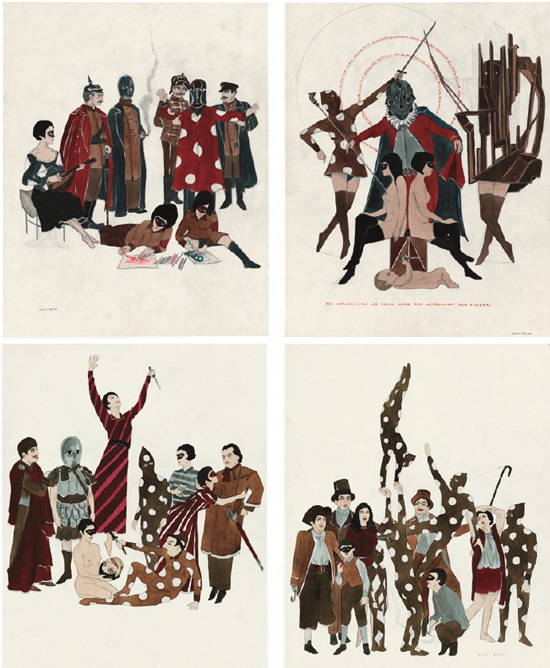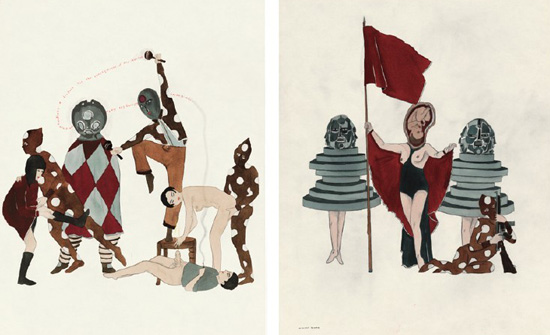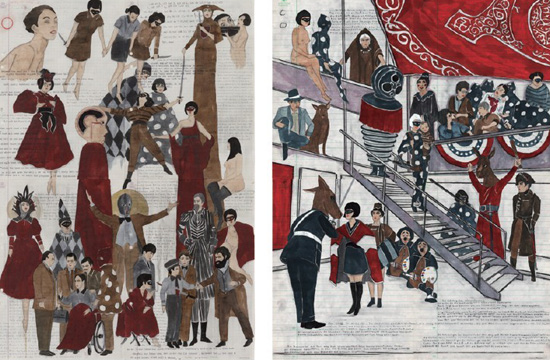|
Introduction of the artist:

Marcel DZAMA (Canada)
Born in 1974, Winnipeg, Canada. Lives and works in New York. Selected solo
exhibitions: 2012 With or Without Reason, Centro de Arte Contemporáneo de
Málaga, Spain / 2011 The Never Known into the Forgotten,
KunstvereinBraunschweig, Germany / 2010 Of Many Turns, Musée d’art contemporain
de Montréal, Canada / 2008 Edition 46 - Marcel Dzama, Pinakothek der Moderne,
Munich, Germany / Selected group exhibitions: 2012 Exquisite Corpses: Drawing
and Disfiguration, MoMA, New York / 2009 Compass in Hand: Selections from The
Judith Rothschild Foundation Contemporary Drawings Collection, MoMA, New York /
2009 Moby Dick, CCA Wattis Institute for Contemporary Arts, San Francisco / 2006
Whitney Biennial.
Introduction of works:

Demons, Dancers, and Drinkers, ink and gouache on paper, 35.6×27.9 cm,
2011
courtesy David Zwirner, New York, DZAMA3195


Demons, Dancers, and Drinkers, ink and gouache on paper, 35.6×27.9 cm,
2011
courtesy David Zwirner, New York, DZAMA3195

Marcel Dzama is well known for his small-scale, quirky ink drawings and
watercolours, depicting with idiosyncratic humour scenes of ambiguous
relationships between figures, objects and events. His images arise out of a
broad range of stylistic sources across high and low culture, from children’s
book illustrations to MTV and comic strip characters; from film noir and science
fiction to Surrealism, whilst evoking the pathos of great literature. They have
a powerful simplicity betrayed as faux na?veté especially in portrayals of
strange rituals, depravity and fetishism.
Large-scale drawings show modest but intensely detailed figures floating
freely within the expanse of paper devoid of landmarks, with no evidence of
context to help locate their presence or oddly mutant existence. There is little
visual information, for example, to help us ascertain whether a human figure
with an animal head is some uncanny collision, the result of a scientific
experiment gone wrong or merely a pantomime costume. Through an avoidance of
irony, Dzama’s imagery retains innocence and radiates a kind of purity; subjects
seem stripped of any political or philosophical pretension and any specific
narrative. Such ambiguity, conveyed with all the the intensity and awkwardness
of amateur dramatics, also characterises his more recent video and sculptural
pieces.
| 
